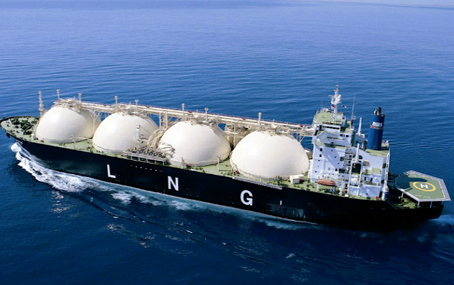- Blog
- LNG: A bridge fuel to climate disruption
LNG: A bridge fuel to climate disruption

Donate Now!
Your contribution will benefit Friends of the Earth.
Stay Informed
Thanks for your interest in Friends of the Earth. You can find information about us and get in touch the following ways:
There has been a recent, misguided Congressional push to export more natural gas in the form of liquefied natural gas, or LNG. LNG is a form of natural gas that has been turned into a liquid so it can be stored and shipped to foreign markets. LNG poses a potentially greater threat to our climate than even coal, which raises the question as to why President Obama highlighted natural gas in his “all of the above” strategy. LNG pollutes our air and water and exacerbates climate disruption during extraction, processing, and transport. One of the dirty secrets of natural gas is its release of methane, which is 87 times as potent as carbon dioxide over a 20 year time frame.
Drilling for natural gas is the first step on its path of environmental destruction. One method used to extract natural gas from the ground is hydraulic fracturing, or fracking. Fracking pollutes our air and water — in 2013 alone fracking released over 450,000 tons of pollutants into the air. Recent studies, including an EPA draft assessment, have also found hazardous fracking chemicals in the drinking water of homes near fracking wells. Fracking poses many health and safety risks to those who live near drilling wells, including an increase in earthquakes. For all of these reasons, 66 percent of scientists say they are opposed to fracking.
The problems with LNG only begin with extraction. Nearly 10 percent of natural gas’s life cycle emissions come from leakage during transportation. Methane is leaked throughout the country’s network of natural gas pipelines. As of 2012, there were roughly 305,000 miles of natural gas pipelines in the U.S. and millions of miles of distribution lines. Making matters worse is the fact that some of these pipelines are nearly a century old, which only exacerbates the leakage of methane. The bottom line is that the only way to truly avoid methane leakage and the environmental damage it causes is to keep natural gas in the ground.
Adding to LNG’s climate impact is the complicated processing procedure required to export the gas. While liquefaction of natural gas allows for ease of transport, it also massively increases the industry’s carbon footprint. Natural gas is cooled to turn it into a liquid, then shipped to foreign markets and turned back into a gas on the other side. The entire process is highly energy — and thus carbon — intensive. The Department of Energy estimates that the liquefaction, transport, and regasification process increases the total lifecycle of greenhouse gas emissions from the natural gas industry by 15 percent.
Despite the abundance of environmental and health safety issues with LNG, there has been a push in Congress to force through the approval of LNG exports and the construction of more export terminals to ship LNG overseas. LNG exports are not a good idea. The U.S. Energy Information Administration predicts that LNG exports would lead to massively increased domestic production of natural gas, with three quarters of said production stemming from shale sources. That would mean a greater reliance on fracking, which would lead to more air and water pollution and even more methane emissions.
We must stop investing in a fuel that will continue to destroy our environment. For too long, oil and coal corporations have bought policies to further entrench their fuels of the past. If the world is to hold to a 1.5 degree Celsius global temperature increase, the United States must turn away from fossil fuels and focus on exporting clean, renewable technologies like wind and solar.
Image credit: Chesapeake Climate Action Network
